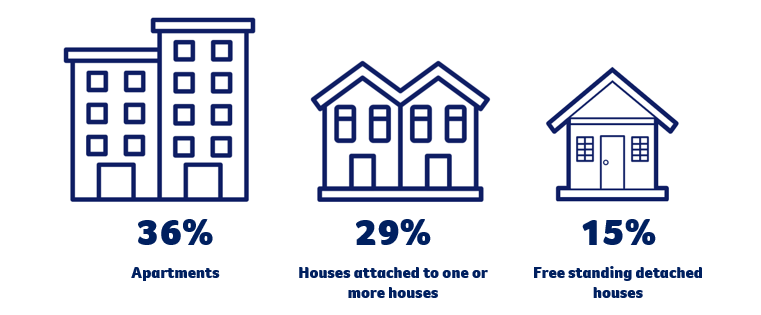- Home
- Cancer Prevention
- Smoking
- Smoke-free environments
- Smoke-free Housing
Smoke-free Housing
Second-hand smoke causes adverse health effects – including cancer – and any level of exposure is unsafe.
In Australia, only a small minority of households with children and non-smokers allow tobacco smoking inside the home.1
However, second-hand smoke transfer (or smoke drift) can move between nearby dwellings causing a nuisance and potential health issues for neighbouring residents.
In NSW, exposure to a neighbour’s tobacco smoke within the home is widespread across housing types, but most common in apartments.

Findings from the 2022 NSW Community Survey on Cancer Prevention reveal the extent of second-hand smoke transfer and community support for tobacco control policies across housing types in NSW. Our full report ‘Tobacco Smoke Transfer Between NSW Homes and Support for Tobacco Control Policy Options’ explores these findings in depth and outlines current policy options within the legal context of NSW.
The rules and regulatory frameworks to address second-hand smoke transfer (or smoke drift) differs across environments, or housing type in NSW.
For specific information relating to smoke free housing see options below:
1 Greenhalgh E, Scollo M, Winstanley M. Tobacco in Australia Facts and Issues: Smoking Bans in the Home and Car [Internet]. Tobacco in Australia; 2022 [cited 2022 Sep 23]. Available from: https://www.tobaccoinaustralia.org.au/chapter-15-smokefree-environment/15-6-domestic-environments
2 Cancer Council NSW. (2023). Tobacco Smoke Transfer Between NSW Homes and Support for Tobacco Control Policy Options – Findings from the NSW Community Survey on Cancer Prevention 2022. https://www.cancercouncil.com.au/cancer-prevention/smoking/smoke-free-environments/smoke-free-housing/